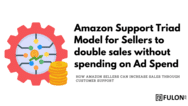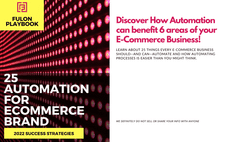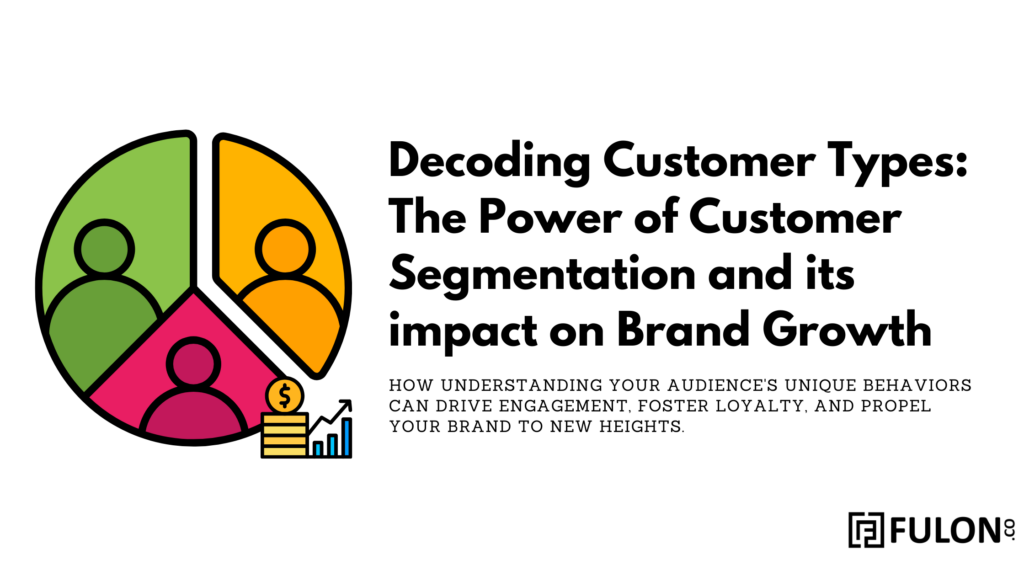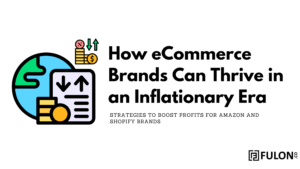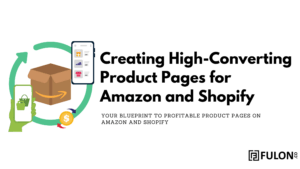Table of Contents
Introduction
By harnessing the power of cutting-edge technology, including AI and data analytics, brands can undergo a transformative journey in the realm of e-commerce. In this article, we will explore the exciting possibilities of e-commerce marketing and illuminate a multitude of ways in which businesses can leverage cutting-edge technology to thrive on Amazon.
Through the embrace of technology and data analytics, brands have the opportunity to enhance customer experiences, foster repeat business, and lay the foundation for sustained success in the online market.
The Essence of Customer Segmentation
Customer segmentation is more than just a division of your audience into smaller groups. It’s a strategic approach to understanding the multifaceted nature of your customer base. By segmenting, you’re essentially creating a detailed map of your audience landscape, identifying valleys of opportunities, peaks of engagement, and terrains that need more exploration.
Holistic Understanding: Segmentation allows brands to see their customers beyond mere numbers. It paints a comprehensive picture of who they are, what they want, and how they interact with the brand. This understanding is pivotal in crafting strategies that resonate.
Personalized Engagement: In today’s digital age, personalization is not just preferred; it’s expected. Segmentation facilitates tailored interactions, ensuring that customers receive content, offers, and messages that align with their preferences and behaviors.
Efficient Resource Allocation: Instead of adopting a broad-brush approach, brands can allocate resources more efficiently. Whether it’s marketing spend, R&D, or customer service efforts, segmentation ensures that resources are channeled where they’ll have the most impact.
Enhanced Product Development: By understanding the distinct needs and preferences of different customer segments, brands can develop products or services that cater specifically to those needs. This not only boosts sales but also enhances customer satisfaction.
Predictive Analysis and Future Growth: Segmentation provides valuable insights into customer behavior patterns. This data-driven approach allows brands to predict future trends, identify potential growth areas, and stay ahead of the curve.
Understanding your E-commerce Audience
Every brand owner knows that not all customers are the same. Recognizing the different types of customers interacting with your brand can be the game-changer in how you approach them.

Here’s a breakdown of the types of customers you’re likely to encounter and how best to engage them:
Champions – Think of them as your brand’s best friends. They not only shop often but also rave about your products to anyone who’ll listen.
Big Spenders – These are your occasional visitors, but when they shop, they go big. They value quality and are willing to pay for it.
Loyalists – They’re like your regulars at a coffee shop. They might not always order the large latte, but they come in several times a week for their usual.
Promising Customers – They’re the new faces who’ve shown signs they might become regulars. They’ve made a few purchases and seem to like what they see.
New Customers – First-timers. They’ve just walked into your ‘store’, and you have one shot to impress.
Need Attention – They were once active, but lately, they’ve been distant. They haven’t forgotten you, but they might need a little nudge.
About to Sleep – Their visits and purchases have been dwindling. They’re on the verge of drifting away.
Lost Customers – It’s been a while since you’ve seen them. They’ve been inactive for a significant period.
Categorizing your E-commerce Customers Types
Understanding your customers goes beyond recognizing individual types. Grouping them into broader categories can offer a streamlined approach to engagement.

Here’s a fresh take on categorizing your customers:
Occasional Visitors:
Who They Are: These are the customers who interact with your brand sporadically. They might be driven by seasonal offers, specific needs, or impulse purchases.
Types Included:
New Customers: First-timers on your platform.
About to Sleep: Those whose engagement is dwindling.
Lost Customers: Haven’t engaged in a long time.
Engagement Tip: These customers need consistent reminders of your brand’s value. Occasional discounts, re-engagement campaigns, and showcasing new arrivals can reignite their interest.
Personalized Buying Experience: Think of them as tourists in a city. They’re curious, but they need clear signs and attractions. Start by grabbing their attention with eye-catching marketing campaigns. Once they’re browsing your site, highlight popular or on-sale items to entice them. And remember, they’re looking for a hassle-free experience. So, streamline the checkout process, maybe by offering guest checkouts or easy returns. After their purchase, a simple “Thank you, come again!” with a special offer can make them consider another visit.
Rising Stars:
Who They Are: These customers have shown promise. They’ve made a few purchases and, with the right nudge, could become brand loyalists.
Types Included:
Promising Customers: They’ve shown potential to become core customers.
Need Attention: Engaged before but are now drifting.
Engagement Tip: They’re on the cusp of becoming loyal customers. Personalized content, targeted offers, and showcasing customer testimonials can help transition them to the next category.
Personalized Buying Experience: These are your regular town visitors. They’ve been to the main attractions, and now they’re looking for a deeper experience. Share stories about your brand or products to connect with them. Display customer reviews prominently; let them know others are enjoying what you offer. Offer bundle deals or complementary product suggestions to enhance their shopping. And once they’ve shopped, ask for feedback. Maybe introduce them to a loyalty program, giving them more reasons to return.
Brand Ambassadors:
Who They Are: The heart and soul of your brand. They shop frequently, leave reviews, and often bring in new customers.
Types Included:
Champions: Your brand advocates.
Big Spenders: High monetary value shoppers.
Loyalists: Regular shoppers with consistent engagement.
Engagement Tip: Deepen the bond. Offer loyalty programs, exclusive events, and co-creation opportunities. They’re already invested in your brand; give them reasons to stay that way.
Personalized Buying Experience: These are your locals, the ones who’ve seen the evolution of your brand. They don’t need introductions; they need exclusivity. Offer them early access to new products or special previews. Personalize their shopping experience, maybe by remembering their preferences or suggesting new items based on their past buys. After a purchase, make them feel special. A personalized thank-you, an exclusive offer, or even a shout-out can go a long way.
But here’s the thing: The world of e-commerce is ever-evolving. What works today might need tweaking tomorrow. So, always keep an ear to the ground. Regularly ask your customers for feedback. Use tools, surveys, or even direct chats to understand their needs and adjust accordingly.
Understanding your customers and tailoring their shopping experience isn’t just good business; it’s essential. It’s what transforms casual browsers into loyal customers and brand advocates. And for e-commerce brand owners, that’s the ultimate win.
Harnessing the Power of RFM: A Data-Driven Approach for E-commerce Success
While categorizing customers offers a bird’s-eye view, diving deeper into their buying patterns can provide invaluable insights. This is where the RFM framework comes into play, acting as a compass for e-commerce brand owners to navigate the vast ocean of customer data.
Decoding the RFM Framework
RFM stands for:
-
Recency: When did the customer last make a purchase or interact with your brand?
-
Frequency: How often does the customer engage with your brand?
-
Monetary Value: How much does the customer typically spend during their interactions?
Why RFM Matters for E-commerce Brand Owners
-
Precision Marketing: By understanding the RFM scores of customers, brand owners can tailor marketing campaigns to resonate with specific segments, ensuring higher engagement and conversion rates.
-
Customer Retention: RFM allows brand owners to identify customers who might be on the verge of churning, enabling timely interventions to re-engage and retain them.
-
Optimized Resource Allocation: With insights from RFM, brand owners can allocate resources more efficiently, targeting high-value segments that promise better returns on investment.
Integrating RFM into Your E-commerce Strategy
-
Data Collection: Start by gathering comprehensive data on customer interactions. Most e-commerce platforms offer detailed analytics which can be harnessed for RFM analysis.
-
Segmentation: Segment your customers based on their RFM scores. This segmentation can then guide your marketing campaigns, loyalty programs, and customer outreach initiatives.
-
Continuous Refinement: The insights from RFM should be used to iteratively refine your engagement strategies. For instance, customers with high recency but low frequency might benefit from regular product updates or newsletters.
By integrating RFM into the e-commerce strategy, brand owners can not only enhance customer engagement but also drive sustained growth in an increasingly competitive market.
Evolving with the E-commerce Landscape: Staying Ahead of the Curve
In the rapidly changing world of e-commerce, understanding and adapting to your customers is crucial. However, it’s equally important to keep an eye on the broader landscape. The most successful e-commerce brand owners are those who not only cater to their customers but also anticipate market shifts and technological advancements.
The Fluidity of E-commerce Trends
The e-commerce industry is characterized by its fluidity. What’s trending today might be obsolete tomorrow. As brand owners, staying updated with the latest trends, technologies, and consumer behaviors is paramount.
Emerging Technologies: Augmented Reality (AR) and Virtual Reality (VR) are revolutionizing the online shopping experience, offering customers a ‘try before you buy’ experience from the comfort of their homes. Similarly, the rise of AI-driven chatbots is enhancing customer service, providing instant responses to customer queries.
Sustainability and Ethical Shopping: Modern consumers are increasingly conscious of their environmental footprint. They’re seeking out brands that prioritize sustainability, ethical production, and transparent supply chains. Demonstrating your brand’s commitment to these values can significantly enhance customer trust and loyalty.
Global Shopping Festivals: Events like Black Friday, Cyber Monday, and Singles’ Day are becoming global phenomena. Tapping into these events can provide a significant boost in sales and brand visibility.
Summary
In wrapping up, while understanding your customers and segmenting them effectively is the bedrock of a successful e-commerce strategy, evolving with the industry is what ensures longevity and sustained growth.
The brands that anticipate change and adapt swiftly are the ones that thrive. As an e-commerce brand owner, your journey is one of continuous evolution, innovation, and growth. Embrace it.


